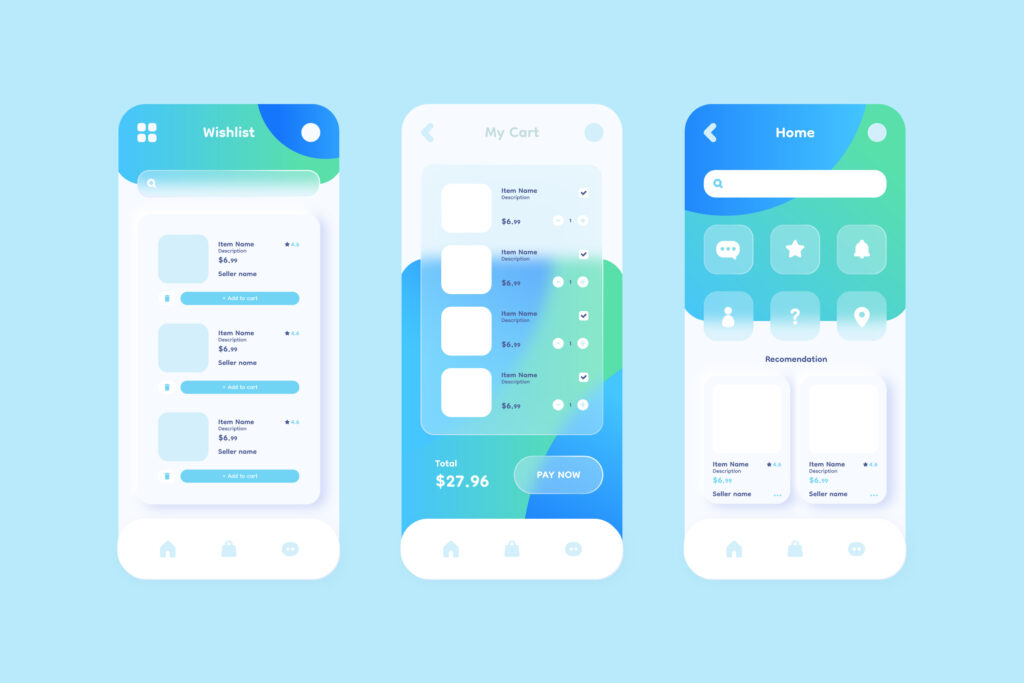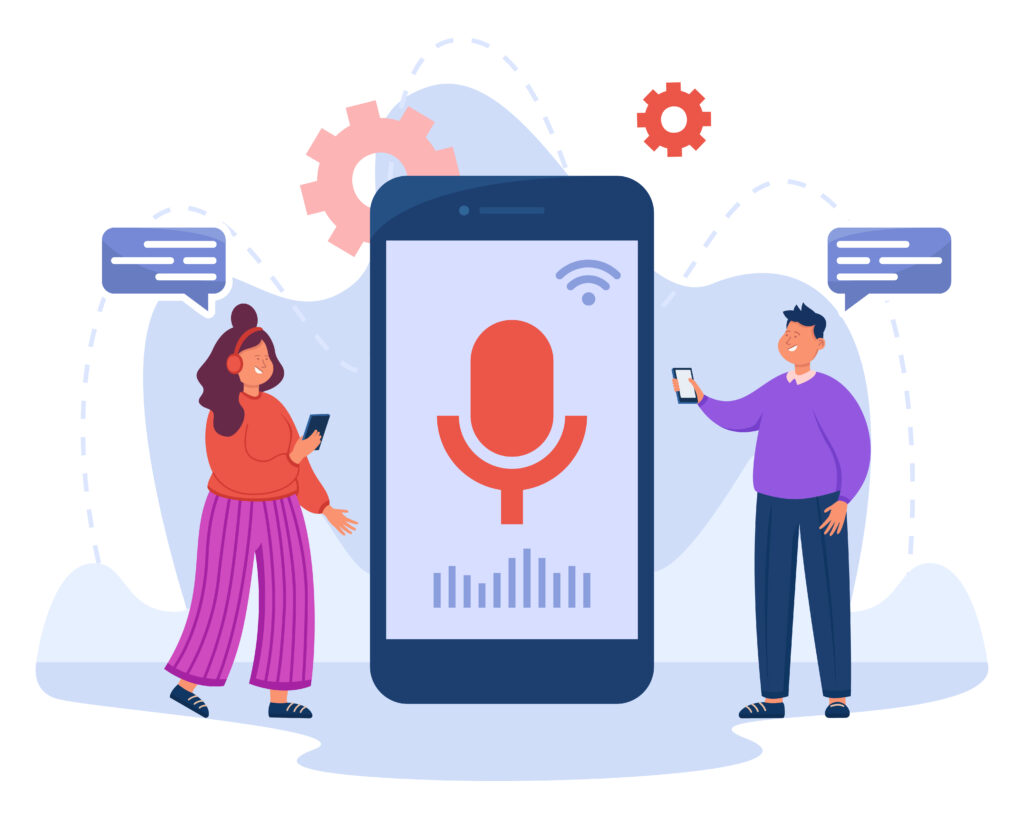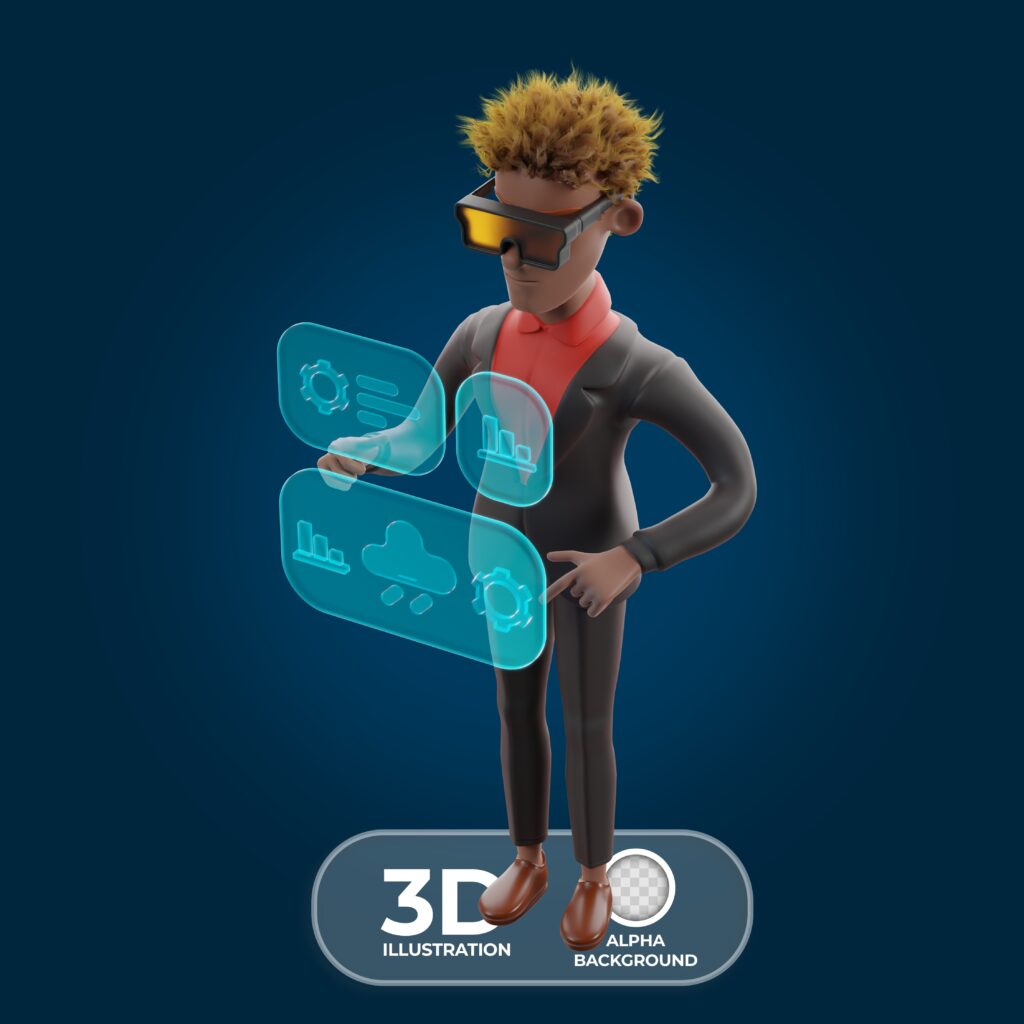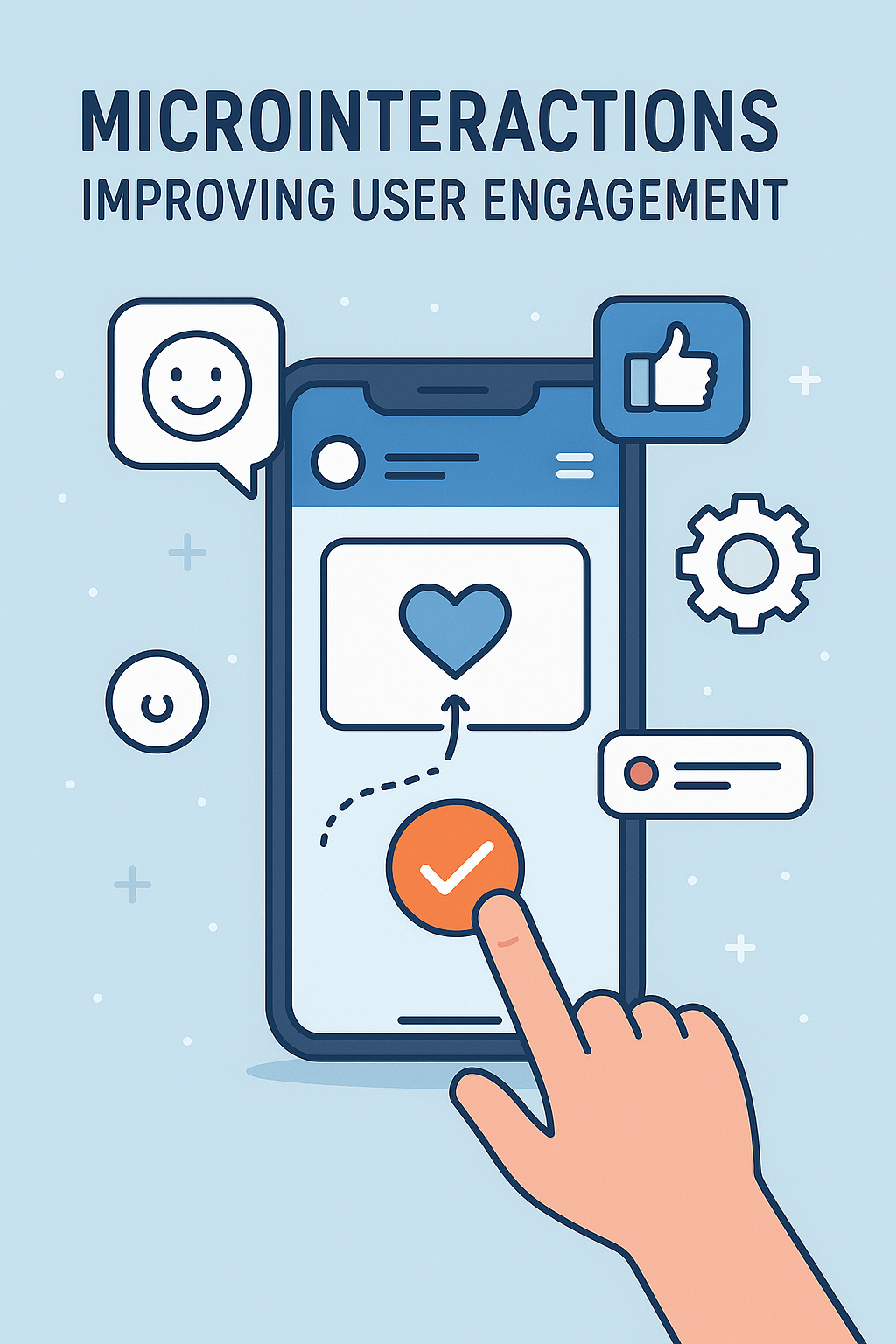User experience plays a major role in determining the success of any mobile application.
Every detail matters, and microinteractions have become a key factor in creating seamless, enjoyable experiences.
These small, interactive design elements are often overlooked, yet they hold the power to make apps more intuitive and engaging.
By focusing on subtle feedback and responses, microinteractions help users feel connected to an application, ultimately increasing retention and satisfaction.
What Are Microinteractions?
Microinteractions are small design elements that provide feedback, guide users, or create a sense of progress during an interaction.
They occur in specific moments, like pressing a button, swiping a card, or receiving a notification.
Common examples include animated icons, progress bars, and vibration feedback after an action is completed.
Their primary purpose is to make the interface feel alive and responsive, reducing friction in navigation and improving overall usability.
These seemingly minor details significantly impact how users perceive an app.
The Role of Microinteractions in Improving User Engagement in Mobile Apps
Microinteractions add small but meaningful details to mobile apps, making user actions feel smooth and engaging.
They enhance usability, create delight, and keep users more connected with the app.
Provide Instant Feedback
Immediate feedback reassures users that their actions were successful, removing any doubts or confusion.
For instance, tapping a like button and seeing a quick heart animation or color change confirms the interaction.
Without such cues, users might repeatedly tap or assume the app is unresponsive.
These small confirmations reduce frustration and make the app feel responsive and well-designed.
Instant feedback not only prevents errors but also increases user confidence, encouraging continued engagement.
When every action feels acknowledged, users develop trust in the application, which is crucial for building loyalty and positive user experiences.

Enhance Emotional Connection
Design is not just about functionality; emotions play a huge role in user engagement.
Microinteractions give apps a lively, human touch, reducing their robotic feel and making them more engaging.
Subtle animations, cheerful sound effects, or fun visual cues after completing a task can create positive emotions and a sense of delight.
This emotional engagement keeps users coming back because the app feels enjoyable and interactive rather than dull and static.
Building an emotional connection through microinteractions makes users associate the app with a positive experience, which significantly increases retention and long-term loyalty.
Make Waiting Less Frustrating
Loading times and delays are inevitable in mobile apps, but they often lead to user frustration.
Microinteractions turn this negative experience into a more tolerable or even enjoyable one.
For example, animated progress bars, creative illustrations, or playful loading screens give users something engaging to look at while they wait.
These elements provide transparency about progress, reducing uncertainty and preventing users from abandoning the process.
By using microinteractions to make waiting less frustrating, developers can keep users engaged even during unavoidable delays, improving overall satisfaction and retention rates.
Create a Sense of Achievement
Users feel motivated when they see their actions rewarded, even in small ways.
Microinteractions, such as celebratory animations, checkmarks after completing a task, or confetti effects for achieving a goal, create a sense of accomplishment.
This engaging feedback motivates users to keep exploring and interacting with the app.
Gamification elements often rely heavily on microinteractions to keep users motivated and engaged.
When people feel acknowledged and rewarded, their emotional connection to the app strengthens, leading to repeated usage and long-term loyalty.
Even small celebratory touches can strongly influence how engaged users feel.

Guide User Behavior
Navigation within an app can sometimes be confusing, especially for new users.
Microinteractions act as subtle guides, helping users understand what to do next without lengthy tutorials or instructions.
Examples include a button that slightly enlarges when hovered over, a swipe animation hint for card-based layouts, or color changes to indicate the next step.
Clear visual signals help users adapt quickly and move through the app with ease.
By guiding behavior in a non-intrusive way, microinteractions improve usability, reduce errors, and create a seamless flow that keeps users engaged without overwhelming them.
Benefits of Microinteractions
Microinteractions add small but powerful details that make apps easier, faster, and more enjoyable to use. Here are some benefits of microinteractions.
Improved Usability
Microinteractions make apps easier to use through clear feedback for every action.
For example, when a button changes color or animates after being pressed, users instantly know their input worked.
This confirmation reduces confusion and creates a smooth, intuitive flow.
Progress bars, loading indicators, and subtle cues also guide people naturally through each step.
Instead of guessing outcomes, users feel in control and confident while navigating.
Even complex tasks become simple because the design communicates what is happening at all times.
This practical support ensures a seamless journey from start to finish, turning interactions into effortless and rewarding experiences.

Stronger Brand Personality
Custom animations and unique interactions do more than improve usability. They also highlight a brand’s personality and make an app feel distinctive.
A playful bounce after sending a message or a stylish transition during checkout reflects the app’s identity.
These details feel intentional, creating stronger emotional connections with users.
Instead of being just another app on a phone, the design gains character that people remember.
Over time, such microinteractions become a signature of the brand.
They help the app stand out in competitive markets while giving users an engaging and memorable experience that strengthens brand loyalty and recognition.
Higher User Retention
Engaging design elements encourage people to return to an app more often.
Microinteractions help achieve this by turning routine actions into enjoyable moments.
For instance, a creative animation when liking a post or completing a task makes the experience feel rewarding.
These small touches spark positive emotions that motivate users to repeat actions.
As interactions become fun instead of ordinary, people are less likely to abandon the app. Over time, these experiences build habits and strengthen loyalty.
Microinteractions ensure users feel satisfied and entertained, which increases retention and helps the app maintain long-term growth and consistent engagement.
Reduced Cognitive Load
Users can feel overwhelmed when an interface is crowded or unclear. Microinteractions solve this issue through simple visual cues and instant responses.
A color change on a toggle switch or a progress indicator on a button removes uncertainty and guides people step by step.
These subtle signals make decisions easier and free users from overthinking. As tasks become simpler, the app feels faster and more intuitive.
Reducing mental effort improves focus and allows people to complete goals with less stress.
Microinteractions transform complex processes into smooth experiences, making the application more efficient, user-friendly, and enjoyable for everyday use.

Enhanced User Satisfaction
Consistency and responsiveness in design build trust, and microinteractions make this possible.
Immediate feedback, such as a smooth swipe, gentle vibration, or confirmation sound, gives users confidence that actions worked.
These details create enjoyable moments during interactions, encouraging people to continue using the app.
When responses feel natural and predictable, satisfaction increases because the experience feels reliable.
Over time, this creates loyalty and trust, making users more likely to recommend the app to others.
Microinteractions elevate ordinary usage into memorable experiences, leaving a positive impression that deepens engagement and ensures long-lasting satisfaction with the product.
Trends in Microinteractions for 2025
Microinteractions are evolving with new technologies, offering smarter and more engaging experiences.
In 2025, trends like voice feedback, haptic effects, personalized animations, AR visuals, and sustainable design will shape the future of app interactions.
Voice-Activated Feedback
Voice control is becoming an important part of mobile apps, and microinteractions are adapting to support it.
Instead of relying only on taps, users can give voice commands and receive instant responses.
Visual highlights, subtle tones, or light vibrations confirm that the command worked, keeping users informed.
This type of hands-free interaction is useful for multitasking, accessibility, and mobile use while traveling.
As voice assistants grow more advanced, voice-activated microinteractions will make apps faster, more convenient, and easier for everyone.
The result is a natural way of interacting that improves efficiency and fits seamlessly into everyday routines.

Haptic Enhancements
Haptic feedback is evolving beyond simple vibrations into more precise, meaningful tactile responses.
Instead of a single buzz, apps now use different vibration patterns that match specific actions.
Unlocking a feature can feel like a gentle tap, while an error may create a sharper pulse.
These variations create a stronger connection between users and the app, letting them physically sense outcomes.
Haptic enhancements also improve accessibility because they provide non-visual cues that guide users.
This deeper level of interaction makes apps more immersive and engaging, turning every action into a more memorable and realistic experience that strengthens overall usability.
Personalized Animations
Microinteractions are becoming more personalized as apps adapt to individual behavior.
Instead of generic effects, animations adjust based on user habits and preferences.
A shopping app might display celebratory visuals after a frequent purchase, while a productivity app could add motivational effects when tasks are completed.
These tailored interactions make the experience feel unique and meaningful, creating stronger emotional connections.
By observing user patterns, apps deliver animations that match personality and needs.
Personalized microinteractions keep people engaged because they feel understood, valued, and more connected to the application, leading to deeper loyalty and greater long-term usage.
AR and 3D Effects
Augmented reality and three-dimensional visuals are shaping the future of mobile microinteractions.
Apps now offer immersive experiences that go beyond flat animations.
A shopping app can let users preview products through AR effects, while a navigation app may use 3D visuals to display interactive directions.
These advanced effects make apps more dynamic, futuristic, and exciting.
Combining virtual elements with physical surroundings enhances immersion and user engagement.
In 2025, AR-driven microinteractions will become more common, transforming everyday interactions into visually captivating experiences that set apps apart and keep users actively involved.

Sustainable Design
Sustainability is becoming a major focus in app design, and microinteractions are evolving to support this need.
Animations are now designed to be lightweight and energy-efficient without losing quality.
This approach ensures apps run smoothly, conserve battery, and perform well even on older devices.
Reducing unnecessary complexity also improves speed, allowing users to enjoy fast and responsive experiences.
Sustainable microinteractions show responsibility toward both users and the environment, creating a balance between creativity and efficiency.
These optimized designs provide engaging effects while promoting long-term usability, making apps accessible, practical, and environmentally conscious in the digital age.
How Can Brandout Design Microinteractions That Keep Your Users Engaged?
Brandout helps improve user engagement by creating smooth and interactive app designs enriched with microinteractions.
Through our UI/UX design services, we add elements like animations, haptic feedback, and custom transitions that make apps easier and more enjoyable to use.
These details keep users engaged, reduce confusion, and strengthen loyalty to your app.
Conclusion
Microinteractions may appear minor, yet they play a powerful role in boosting user engagement.
They bring life to static interfaces, guide users effortlessly, and add emotional value to every interaction.
Businesses that invest in thoughtful microinteraction design can significantly boost satisfaction, retention, and overall app success.
As trends evolve, adopting innovative interaction patterns will be essential for staying ahead in a competitive digital landscape.
Most Asked Questions:
What are examples of microinteractions in apps?
Examples of microinteractions include animated like or favorite buttons, swipe gestures for navigation, loading spinners, and progress bars.
They also appear as toggles, vibrations, or sound cues that confirm user actions. These small details guide users and make the app feel more responsive.
How do microinteractions improve engagement?
Microinteractions keep users engaged by giving instant feedback and making interactions feel smooth.
They reduce confusion, simplify navigation, and create enjoyable experiences.
When every action feels acknowledged, users develop trust and are more likely to stay active within the app.
Are microinteractions important for mobile app success?
Yes, microinteractions are a vital part of mobile app success. These details make apps easier to use and more intuitive, resulting in a better experience.
By creating positive emotional connections, they increase user retention and encourage long-term loyalty to the app.
Do microinteractions affect app performance?
Efficiently designed microinteractions run smoothly without slowing down performance.
Lightweight animations and optimized effects ensure they look good while maintaining speed.
When developed with care, they enhance the user experience without draining battery or memory.
What are the key trends for 2025 in microinteractions?
Microinteractions in 2025 focus on innovation and personalization. Key trends include voice-activated feedback, advanced haptic patterns, and AR or 3D visual effects.
Personalized animations and sustainable, energy-efficient designs will also shape how apps deliver engaging experiences.




